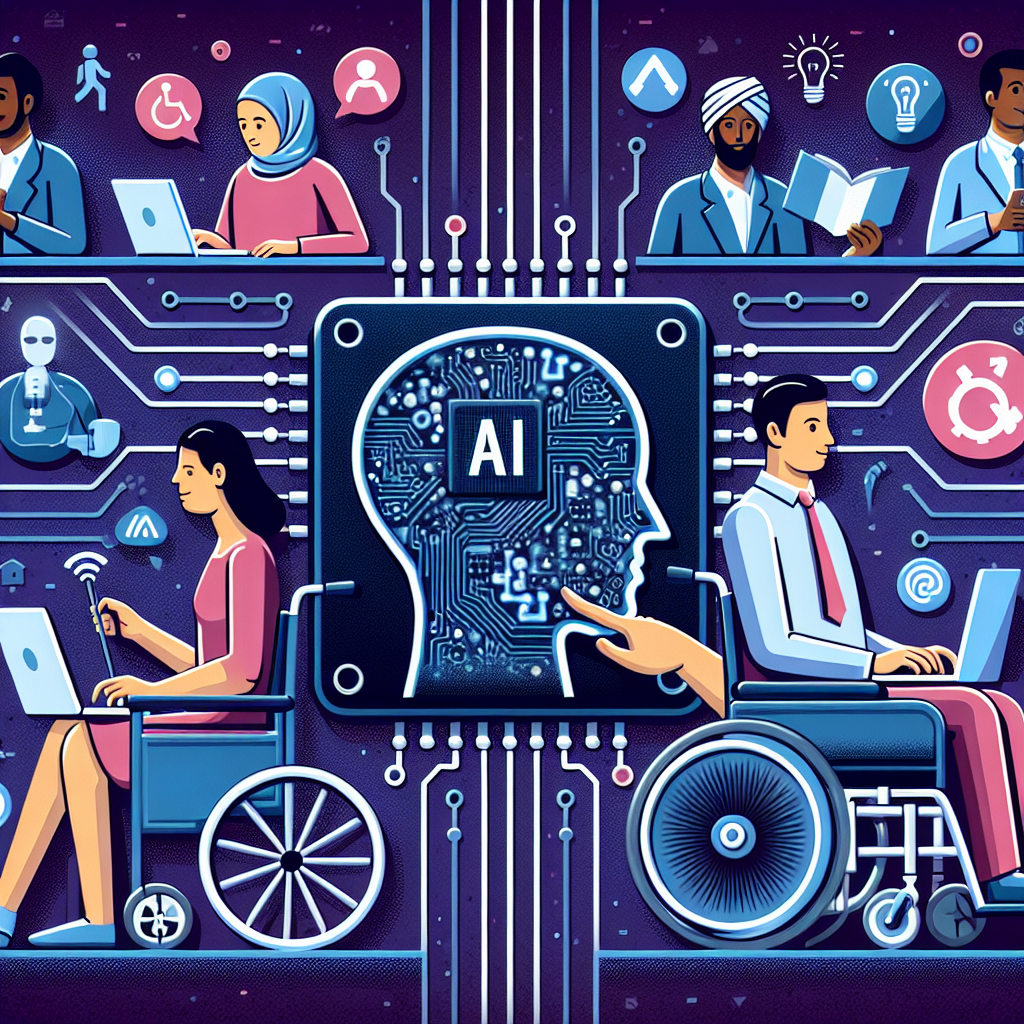Introduction
In recent years, artificial intelligence (AI) automation has been making significant strides in enhancing disability rights and accessibility for individuals with disabilities. AI technologies have the potential to revolutionize the way people with disabilities interact with the world around them, providing new opportunities for independence, empowerment, and inclusion. In this article, we will explore how AI automation is being used to improve disability rights and accessibility, as well as some of the challenges and opportunities that come with this technology.
AI Automation and Accessibility
AI automation has the potential to transform accessibility for individuals with disabilities in a variety of ways. One of the most significant benefits of AI technology is its ability to analyze and interpret vast amounts of data quickly and accurately. This can be particularly useful for individuals with visual or hearing impairments, as AI can be used to convert text to speech or vice versa, making information more accessible to those who may have difficulty reading or hearing.
Additionally, AI automation can be used to develop innovative solutions for mobility challenges faced by individuals with physical disabilities. For example, self-driving cars powered by AI technology have the potential to provide greater independence and mobility for individuals who may not be able to drive a traditional vehicle. These vehicles can be programmed to navigate safely and efficiently, allowing individuals with disabilities to travel independently and access opportunities that were previously out of reach.
AI automation can also be used to improve communication for individuals with speech or language impairments. Speech recognition technology powered by AI can help individuals with disabilities communicate more effectively, whether through text-to-speech applications or customized communication devices. These technologies can help individuals with disabilities express themselves more clearly and confidently, enhancing their ability to engage with others and participate fully in society.
Challenges and Opportunities
While AI automation has the potential to enhance disability rights and accessibility in significant ways, there are also challenges that must be addressed. One of the main concerns is the potential for bias in AI algorithms, which can inadvertently perpetuate discrimination against individuals with disabilities. For example, if AI systems are not trained on diverse datasets that include individuals with disabilities, they may not be able to accurately interpret or respond to their needs.
Another challenge is ensuring that AI technologies are designed with accessibility in mind from the outset. It is essential that developers consider the needs and preferences of individuals with disabilities when designing AI solutions, to ensure that they are inclusive and user-friendly for all users. This may require collaboration with individuals with disabilities and disability rights organizations to ensure that AI technologies meet their specific needs and are not inadvertently excluding or marginalizing them.
Despite these challenges, there are also significant opportunities for AI automation to enhance disability rights and accessibility. AI technologies have the potential to revolutionize the way individuals with disabilities interact with the world around them, providing new opportunities for independence, empowerment, and inclusion. By harnessing the power of AI, we can create a more inclusive society that values diversity and ensures that individuals with disabilities have equal access to opportunities and resources.
FAQs
Q: How is AI automation being used to improve accessibility for individuals with disabilities?
A: AI automation is being used in a variety of ways to improve accessibility for individuals with disabilities. For example, AI technologies can convert text to speech or vice versa, develop solutions for mobility challenges, and improve communication for individuals with speech or language impairments.
Q: What are some of the challenges associated with AI automation and disability rights?
A: One of the main challenges is the potential for bias in AI algorithms, which can inadvertently perpetuate discrimination against individuals with disabilities. Additionally, ensuring that AI technologies are designed with accessibility in mind from the outset can be a challenge.
Q: What are some of the opportunities for AI automation in enhancing disability rights and accessibility?
A: AI automation has the potential to revolutionize the way individuals with disabilities interact with the world around them, providing new opportunities for independence, empowerment, and inclusion. By harnessing the power of AI, we can create a more inclusive society that values diversity and ensures that individuals with disabilities have equal access to opportunities and resources.

